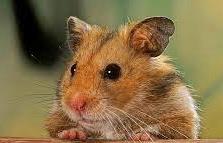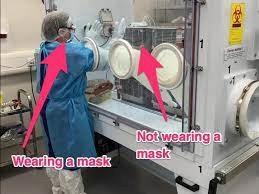 In a published study* scientists affiliated to the NIH National Institute of Allergy and Infectious Diseases, Rocky Mountain Laboratory in Hamilton, Montana, investigated the route of infection associated with SARS-CoV-2 virus responsible for COVID. Experiments involved exposing hamsters, that are susceptible to the virus, to both aerosol and contaminated surfaces. It was determined that aerosol transmission is highly effective and results in virus replication within lung tissue. In contrast, exposure from contaminated surfaces (fomites) involved replication of the virus in the nasal passages without inducing pulmonary damage. In an additional study involving animal-to-animal transmission of virus by the aerosol route it is shown that airborne transmission was more efficient than surface contamination.
In a published study* scientists affiliated to the NIH National Institute of Allergy and Infectious Diseases, Rocky Mountain Laboratory in Hamilton, Montana, investigated the route of infection associated with SARS-CoV-2 virus responsible for COVID. Experiments involved exposing hamsters, that are susceptible to the virus, to both aerosol and contaminated surfaces. It was determined that aerosol transmission is highly effective and results in virus replication within lung tissue. In contrast, exposure from contaminated surfaces (fomites) involved replication of the virus in the nasal passages without inducing pulmonary damage. In an additional study involving animal-to-animal transmission of virus by the aerosol route it is shown that airborne transmission was more efficient than surface contamination.

The major conclusions that can be drawn from the study is that masking is effective in reducing spread of COVID by aerosol transmission. Obviously limiting contact by social distancing and providing filtered air in areas where people congregate will also be beneficial. Above all, immunity stimulated by vaccination is the primary means of reducing the incidence rate of COVID in a community, but supportive measures as indicated from the NIH transmission experiments are complementary.
Port, J. et al SARS-CoV-2 disease severity and transmission efficiency is increased for airborne compared to fomite exposure in Syrian hamsters. Nature Communications doi.1038/s4 and 467-021-25156-8 (2021)